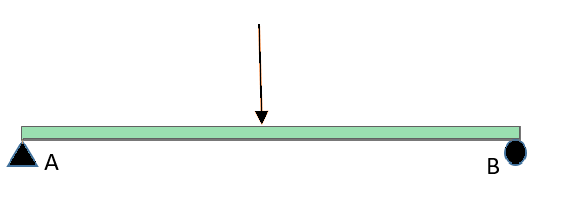Statically Determinate
By BYJU'S Exam Prep
Updated on: September 25th, 2023

In the Civil Engineering design of structures, a stable structure can be classified as a statically determinate structure and a statically indeterminate structure. Almost all structure designed at the site is indeterminate because it provides more rigidity and stability, increasing the overall safety factor. And the statistically determinate structure is also used in many places in the construction. All the stress functions are easy to calculate in the determinate structures, so analysis becomes quite easy.
Statically determinate structures are those structures that don’t have any redundant forces. Because of zero redundancy, we can analyze it with the help of the equilibrium equation alone. Six equilibrium equations are available for a space structure, and three are available for a planner structure, including horizontal equilibrium, vertical equilibrium, and moment equilibrium. While the availability of these equilibrium equations will depend on the type of loading and supports etc. Let us discuss more Statically determinate structures.
Statically Determinate Structures PDF
Download Formulas for GATE Civil Engineering – Structural Analysis
Table of content
What are Statically Determinate Structures?
Statically determinate structures are the structures that require only equilibrium equations for their analysis to find unknown parameters, while an indeterminate structure needs compatibility conditions along with the equilibrium equations. These types of structures are easy to analyze in nature and are just stable structures. By removing any one of the support reactions, it will become an unstable structure or mechanism.
Support reactions are equal to the available equilibrium equations in a statically determinate structure. It can be concluded by calculating the degree of static determinacy of the structure, whether the structure is statically determinate or indeterminate. The degree of static determinacy for such a structure is always zero.
Statically Determinate Beams
Beams are the type of structures which is used mainly to carry transverse loads. Beams can resist the effect of shear force and bending moments induced due to external loading. Based on the degree of static determinacy, it can be categorized as a statically determinate and a statically indeterminate beam. Both types of beams are used in the construction process depending on the type of structure and loading criteria.
Statically determinate beams are easy to analyze for the support reactions because, in such beams, compatibility conditions are not needed. Its disadvantage is that if any support reaction gets zero, it will fail at once.

Difference Between Statically Determinate and Indeterminate Structures
As we know that both statically determinate and statically indeterminate structures are stable structures, and both types of structures have their advantages and disadvantages over each other. Here are some differences between determinate and indeterminate structures have given which help to understand in a better way:
- A statically determinate structure can be just analyzed with the help of equilibrium equations, while an indeterminate structure requires compatibility conditions along with equilibrium equations.
- A determinate structure’s degree of static indeterminacy is always zero, while it will be more than zero for the indeterminate structures.
- There are no redundant reactions available in the determinate structures, while it is available in the case of indeterminate structures.
Download Formulas for GATE Civil Engineering – Geotechnical Engineering
Statically Determinate Truss
A truss is a type of structure that can only take axial load; either it will be compressive or tensile. In a truss structure, all the members are connected through the pins, and loads are applied over them only. Based on the support conditions of a truss, it will be classified as a statically determinate truss or a statically indeterminate truss. In a determinate truss, all the support reactions can be found only with the help of equilibrium equations. Still, compatibility conditions are required in an indeterminate type of truss, along with the equilibrium equations for the analysis of support reactions.
Truss structures are used where the resistance against bending moment is not required because a truss can not offer resistance against bending as it is pin connected. In the case of a truss structure, a few members are provided to carry zero loads, these members are also called zero force members, and such members provide more rigidity to the structure.
Statically Determinate Beams Examples
Many beams are used in civil engineering construction works, which are statically determinate in nature. But in many cases, statically indeterminate beams are preferred because of their advantages like more stability, more rigidness, etc. Here some examples of statically determinate beams are given with their specifications which helps to understand the determinate beams:
Simply supported beam: This is a statically determinate beam supported by hinge support at one end and roller support at the other end of the beam. This beam is mostly used as a determinate beam.
Cantilever beam: This is a determinate beam supported by fixed support at one end and freely supported at the other.
Download Formulas for GATE Civil Engineering – Transportation Engineering


